Cuico
Percussion Trio Feature
-
Ships in 3 to 4 weeks
Details
Description
SKU: CN.15790
Percussion Trio Feature. Composed by Greg Danner. Band Music. Score and parts. Duration 14:50. Published by C. Alan Publications (CN.15790).Depicting an Aztec myth, the music at the opening is fairly abstract and fragmented, with a mixture of tonal and atonal ideas exchanged between soloists and ensemble. Next is a furious dance, featuring each individual percussionist (timpani, congas, toms) in an extended solo. They are joined in a hard-driving rhythmic ostinato, while the winds present two powerful themes in counterpoint. The final section is a joyous conclusion, beginning with a simple melody in the solo xylophone and developing to full ensemble statements in an exciting and jubilant ending.
Cuico - Concerto for Three Percussion & Wind Ensemble was written for the Caixa Trio (Julie Davila, Julie Hill, and Amy Smith) and the Tullahoma (TN) High School band, Stephen and Marion Coleman, directors. The composition dramatically portrays an Aztec creation myth on the origin of music. As a practical concern, it should be noted that the standard concert band percussion instruments have been divided between the percussion soloists and ensemble, so no additional equipment will normally be required. In the Aztec Nahuatl language the word 'Cuico' means 'to sing.' A 16th century Nahua poem describes the myth in great detail. Below is a summary of that poem, taken from Irene Nicholson's book 'Mexican and Central American Mythology.' Tezcatlipoca--god of heaven and of the four quarters of the heavens came to earth and was sad. He cried from the uttermost depths of the four quarters: 'Come, O wind!' The wind rose higher than all things made, whipping the waters of the oceans and the manes of the trees, and arrived at the feet of the god of heaven. Then spoke Tezcatlipoca: 'Wind, the earth is sick from silence. Though we possess light and color and fruit, yet we have no music. We must bestow music on all creation. Go then through the boundless sadness to the high House of the Sun. There the father Sun is surrounded by makers of music. Go, bring back to earth a cluster--the most flowering--of those musicians.' Wind traveled the silent earth until he reached the sun, where all melodies lived in a nest of light. When the Sun saw the wind approaching he told his musicians: 'Here comes that bothersome wind of earth: Stay your music! Cease your singing! Answer him not!' Wind with his dark voice shouted: 'Come, O musicians!' None replied. The clawing wind raised his voice and cried: 'Musicians, singers! The supreme Lord of the World is calling you!' Now the musicians were silent colors; they were a circling dance held fast in the blinding flame of the Sun. Then the wind waxed his wrath. Flocks of cloud, stabbed and torn by lightning assembled to besiege the House of the Sun. His bottomless throat let loose the thunder's roar. A great battle ensued. Spurred on by fear, the musicians ran for shelter to the wind's lap. Bearing them gently, the wind set out on his downward journey. Below, Earth raised its wide dark eyes to heaven and its great face shone, and it smiled. When all that flutter of happiness landed on earth, the Suns musicians spread to the four quarters. Thus did all things learn to sing: the awakening dawn, the dreaming man, the waiting mother, the passing water and the flying bird. Life was all music from that time on. The music interprets this story in five sections: Part 1. - and Tezcatlipoca saw the earth was void of song. The music for this section is fairly abstract and fragmented, with a mixture of tonal and atonal ideas exchanged between soloists and ensemble. Part 2. Wind traveled the silent earth in search of music until he reached the Sun. Here the solo percussion (marimbas and vibraphone) present a layered ostinato, increasing in complexity in counterpoint to a simple melodic theme developing in the ensemble. Part 3. The Suns' musicians were a circling dance, held fast in his blinding flame. This section is a furious dance, featuring each individual percussionist (timpani, congas, toms) in an extended solo. Part 4. The Sun refuses the Wind-a great battle ensues. Here the solo percussion and the ensemble percussion join in a hard-driving rhythmic ostinato, while the winds present two powerful themes in counterpoint. Part 5. Wind prevails and music spreads to the four quarters of the earth. Thus did all things learn to sing: the awakening dawn, the dreaming man, the waiting mother, the passing water and the flying bird. This final section is a joyous conclusion, beginning with a simple melody in the solo xylophone and developing throughout with solo percussion and full ensemble statements to an exciting and jubilant ending.
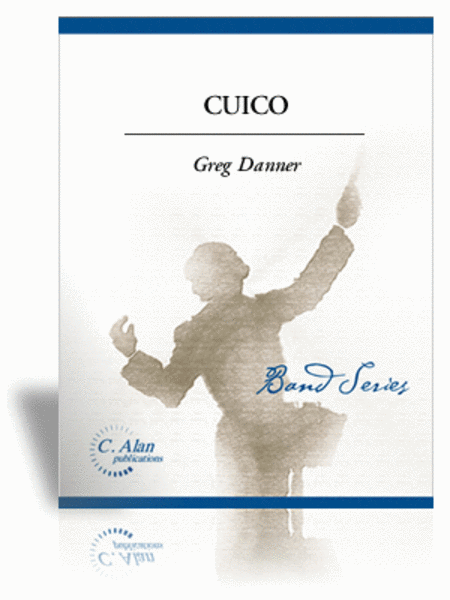
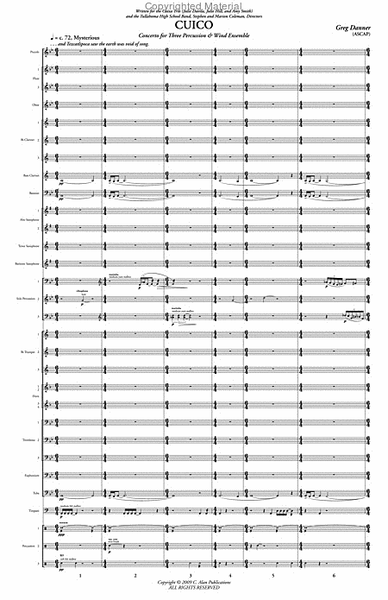
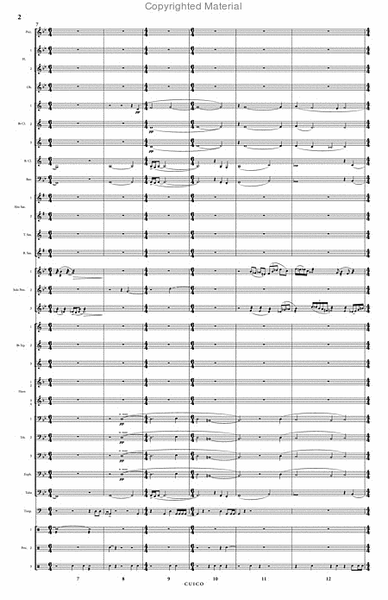
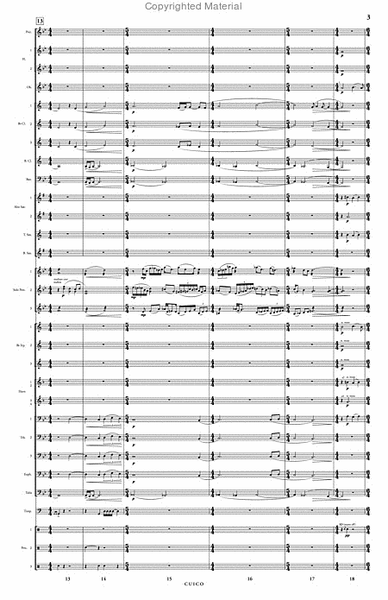
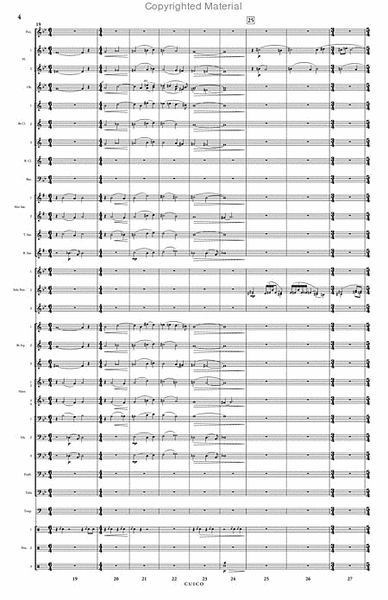
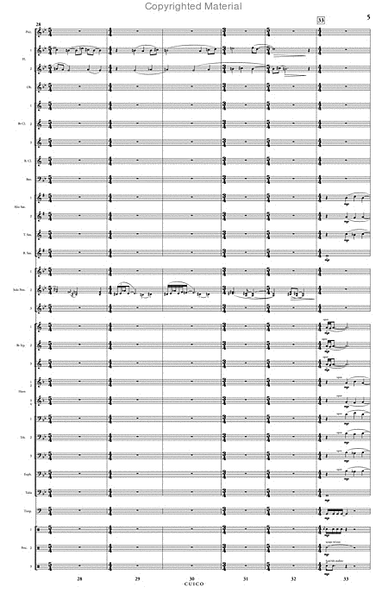
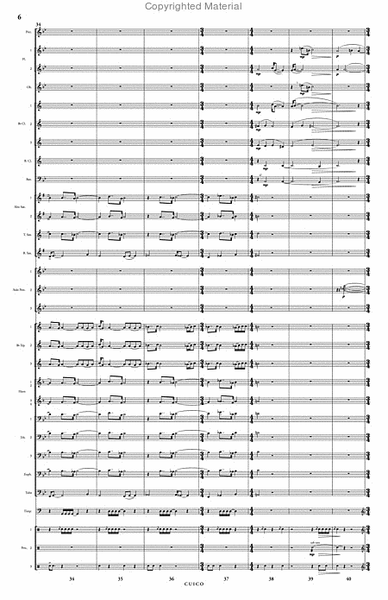
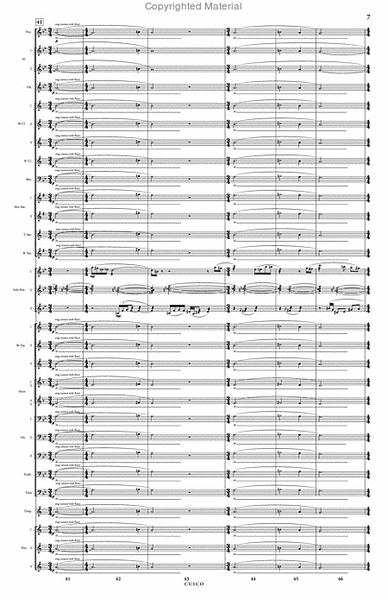
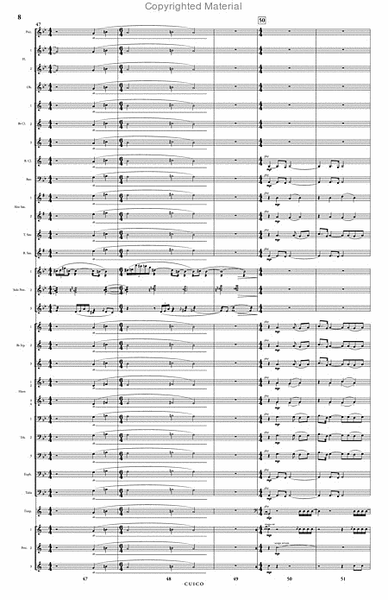
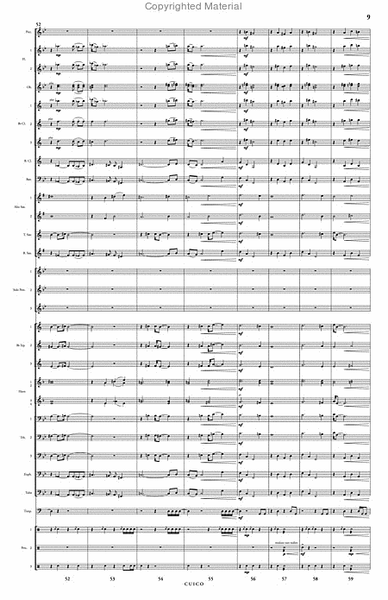
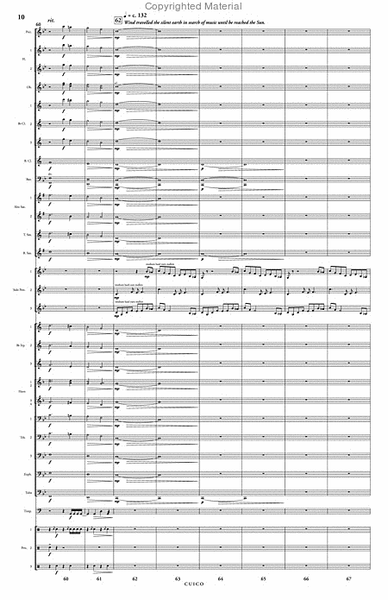
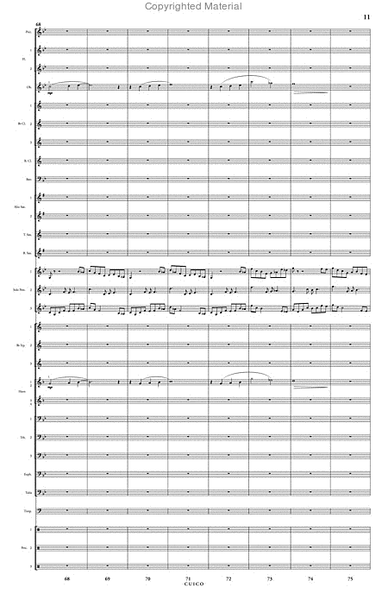
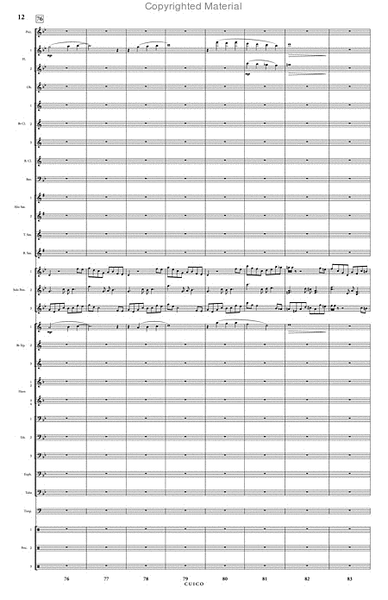
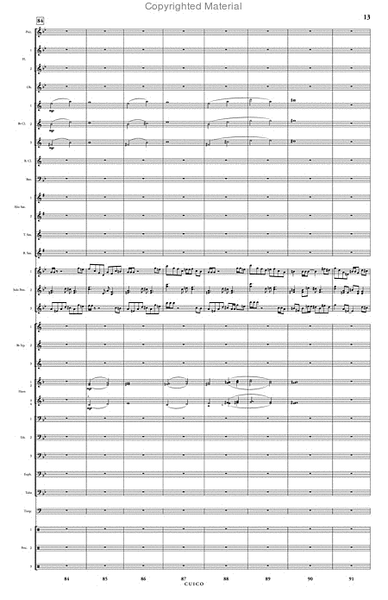
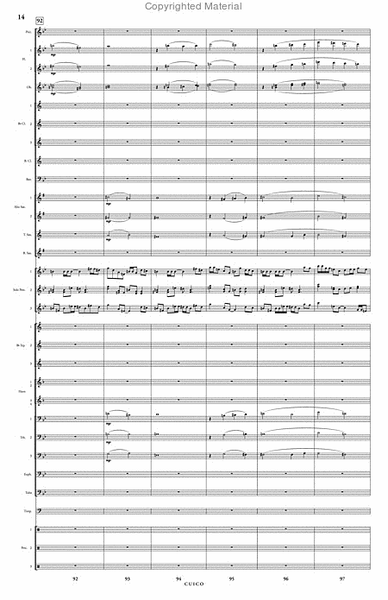
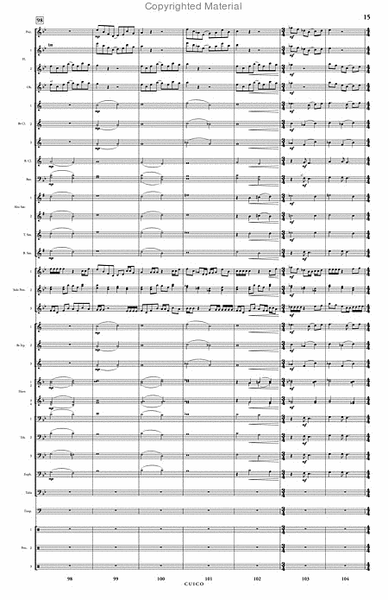
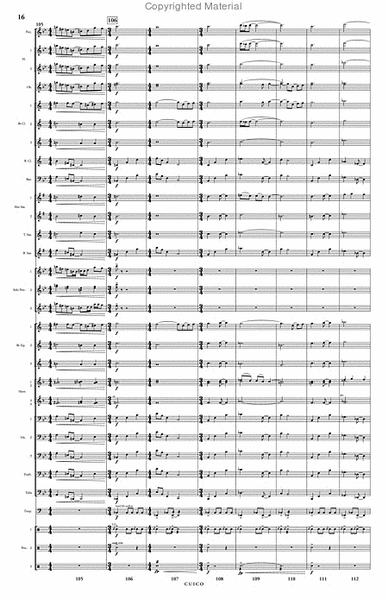
 Share
Share